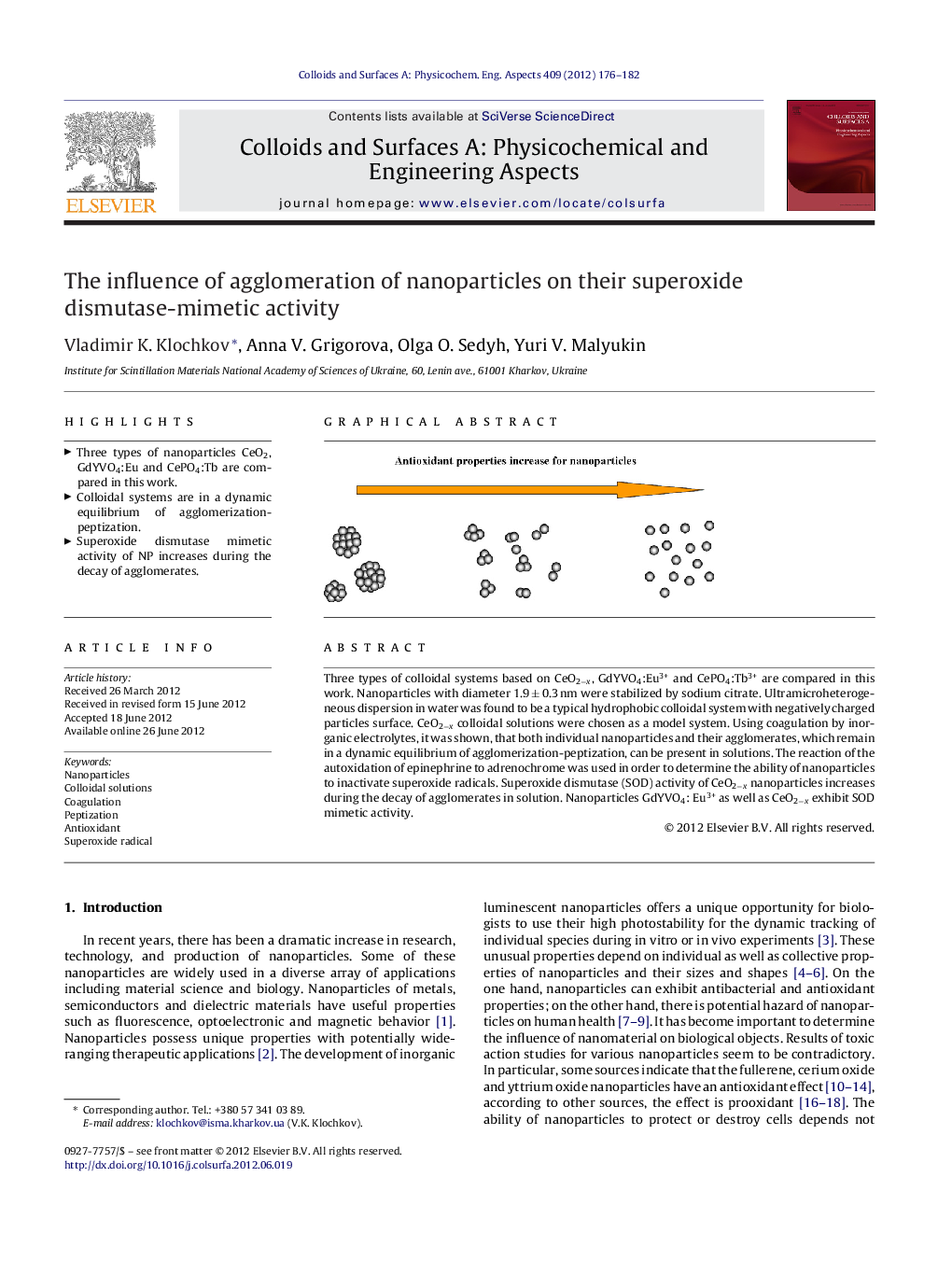| Article ID | Journal | Published Year | Pages | File Type |
|---|---|---|---|---|
| 594083 | Colloids and Surfaces A: Physicochemical and Engineering Aspects | 2012 | 7 Pages |
Three types of colloidal systems based on CeO2−x, GdYVO4:Eu3+ and CePO4:Tb3+ are compared in this work. Nanoparticles with diameter 1.9 ± 0.3 nm were stabilized by sodium citrate. Ultramicroheterogeneous dispersion in water was found to be a typical hydrophobic colloidal system with negatively charged particles surface. CeO2−x colloidal solutions were chosen as a model system. Using coagulation by inorganic electrolytes, it was shown, that both individual nanoparticles and their agglomerates, which remain in a dynamic equilibrium of agglomerization-peptization, can be present in solutions. The reaction of the autoxidation of epinephrine to adrenochrome was used in order to determine the ability of nanoparticles to inactivate superoxide radicals. Superoxide dismutase (SOD) activity of CeO2−x nanoparticles increases during the decay of agglomerates in solution. Nanoparticles GdYVO4: Eu3+ as well as CeO2−x exhibit SOD mimetic activity.
Graphical abstractFigure optionsDownload full-size imageDownload as PowerPoint slideHighlights► Three types of nanoparticles CeO2, GdYVO4:Eu and CePO4:Tb are compared in this work. ► Colloidal systems are in a dynamic equilibrium of agglomerization-peptization. ► Superoxide dismutase mimetic activity of NP increases during the decay of agglomerates.
